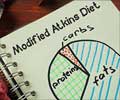Carbohydrates Sources & Recommended Dietary Allowance (RDA)
Carbohydrates are the commonest source of energy in living organisms with glucose being the simplest and most easily absorbable source. Grains contain both complex and simple carbohydrates. Foods containing maximum simple sugars are fruits, sweets and soft drinks. Complex carbohydrates are present mainly in whole grains such as cereals, rice, potatoes, bran, beans, breads and pastas. The most complex carbohydrate is starch present in rice and potatoes.
Each carbohydrate unit of one gram comprises 15.8 kilojoules or 3.75 kilocalories. Proteins make up 16.8 kilojoules or four kilocalories per gram, while fats contain 37.8 kilojoules or 9 kilocalories per gram.
The World Health Organization and the Food and Agriculture Organization, jointly recommend the national dietary guidelines. They recommend that carbohydrates should give us 55 to 75 percent of the total energy requirements out of which only 10 percent should be directly from sugars or simpler carbohydrates.
A general recommendation of most dietary guidelines suggests that complex carbohydrates and simpler carbohydrates, which are “nutrition rich”, should make up the majority of carbohydrate consumption. Examples are fruits (glucose and fructose), milk, and milk products (lactose). The recommended foods do not include sugary drinks, added sugary high calorie foods and candies.
Similarly, foods high in glycemic index also need to be avoided since they are responsible for sudden increase in blood sugar which ultimately is converted to fat.
Glycemic index is the measurement used to detect how quickly food glucose is absorbed, while glycemic load is ascertained by the total absorbable glucose in foods.
Glycemic index and glycemic load is used to characterize food behavior during the process of digestion. They rank carbohydrate-rich foods based on the rapidity of their effect on blood glucose levels.
The insulin index is calculated by the effect of various foods, such as glucose or starch, and some amino acids in food, on blood insulin levels.
Grains and sugars that increase the insulin levels of the blood curb other essential hormones like glucagon and growth hormone. These two hormones play an important role in muscle development and the metabolism of fat and sugar.
Glycemic Index of Some Carbohydrate Foods:
| White Bread | 69 |
| Whole Wheat Bread | 72 |
| Pasta | 38 |
| Puffed Rice | 90 |
| Shredded Wheat | 70 |
| Cornflakes | 83 |
| Oatmeal | 53 |
| Brown Rice | 66 |
| White Rice | 72 |
| Mashed Potatoes | 72 |
| Fructose | 22 |
| Glucose | 100 |
| Honey | 91 |
| Refined Sugar | 64 |
| Corn chips | 72 |
| Oatmeal cookies | 57 |
| Potato chips | 56 |
A Note on Atkins Diet: Robert Atkins instituted the “Atkins Diet” and he is considered to be the father of modern “low carbohydrate diet”. According to him, carbohydrates should be restricted, especially carbohydrates which have a high glycemic index, if you would like to lose weight. This restriction of carbohydrates begins at the induction stage (start of the diet) itself and continues throughout. Dr. Anastassios Pittas, assistant professor of medicine at Tufts University School of Medicine says that “subjects on the low-carbohydrate diet had lost more weight than subjects on the conventional diet at three months”. However, the problem of obesity can reoccur once they get off this diet as people tend to re-gain the unwanted weight. However, in a systematic review of low-carbohydrate diets, Astrup and colleagues found that “the weight loss achieved is associated with the duration of the diet and restriction of energy intake, but not with restriction of carbohydrates”.





















